Our Journey to the DMZ
To get to the DMZ, we needed to travel from Ninh Binh to central Vietnam. The best way to do this was by overnight sleeper train. This was from Ninh Binh to the small town of Dong Ha.
Overnight Sleeper Train
We have travelled a few times by overnight train. A couple of times in Thailand and once before in Vietnam so we knew what it entailed.
We made our booking through 12goasia.com which have used a number of times and always found them good to deal with. There are numerous booking agents located at Tam Coc where we were staying but we always like to deal with companies we can trust in case there are any problems.
We booked our trip on the 1st class soft sleeper train, departing Tam Coc at 9.47pm and arriving in Dong Ha at 7.40am the next morning. Our fare cost us 1,408,056 VND/$88nz for both of us.
We did joke about the departure time of 9.47pm. Why couldn’t they have made it 9.45pm instead. Well, they proved us wrong – the train arrived exactly at 9.47pm and we have the pic to prove it!!
I’m not sure where they get the term ‘soft sleeper’ from. Our beds were like sleeping on planks of wood. Thankfully we were the only passengers in our 4 berth cabin so it was great we had it all to ourselves.
We are also of the opinion that our carriage wasn’t up to the usual standards of other trains we have travelled on. The constant rocking was sometimes quite violent and would rock us in a less than gentle motion. It was also much noisier that other carriages we’ve been in so sleep eluded me all night. Even earplugs couldn’t drown out the loud clatter – let alone our vocal neighbours. Although the carriages are supposed to be non-smoking, they smelt like a stale ashtray. There must have been some serious smokers elsewhere in the carriage as well. The stale smell of smoke was overpowered by the fresh smoke that wafted through.
I think that we were just unlucky to be on an older carriage so it hasn’t put us of overnight train travel. It is still often a great way to travel from A to B.
Tam’s DMZ Cafe
As I’m married to the biggest War History Buff of all time – we wanted to make sure that we booked a tour of the DMZ with a reputable company. Tam’s DMZ Cafe has some good feedback so we decided to book a two day tour and accommodation with them.
There are many places of interest to visit and there is the option to do a one or two day tour. A lot of tours also start in Hue, which is further to the South. There is a lot of time spent travelling if you start and end in Hue. It is a much better option to stay the night in Dong Ha.
The two day tour, one night accommodation and transfers to Hue at the end of day two cost us $300nz. This is a lot of money out of our budget but it’s one of those things that we definitely wanted to do and to do it well.
They were two really full days, and we covered a lot of kilometres so it was money well spent.
Our guide Hoa, really made the tour for us. He was only 9 years old when war first broke out. He shared many first hand accounts of what he and his family went through. His father fought in the South Vietnamese Army and although he suffered injuries, managed to survive the end of the war. Him and his family were evacuated to Da Nang and lived a couple of years in an American Army Camp which was no long in use by the Americans.
The DMZ (Demilitarization Zone)
There is so much history surrounding this whole area. I’m not going to sound like a Wikipedia site so if you are interested to read more about what happened during the American War, click on the link here.
The DMZ is the area around the former border between North and South Vietnam. It was a narrow band of land from the Laos border to the coast, 5 kilometres on either side of the Ben Hai River. This sits roughly on the 17th parallel. All of this area saw heavy fighting in the war.
While the actual border was marked by the river, most historical sights such as American bases are along Highway 9 which runs all the way to the Lao border.
Do not come here expecting to see military basses or weapons. Many of the places we visited were just the remains of the former American military bases. Many were completely destroyed by the Americans when they evacuated.
This is why it is so important to hire a good guide who can explain the sights we visited and explain what the original sites were like. We did come across other small groups who clearly only hired a driver. They would arrive at some of these places and wander around aimlessly, probably wondering what they were actually looking at.
Day One
Quang Tri Museum
Our first stop on our two day tour. A small museum that documents the history of the Quang Tri province, with a focus on its ethnic minorities showing the culture and way of life from the early years.
It covers a lot of the war history and had some interesting displays of military hardware.
Highway 9 Military Cemetery
This cemetery is the resting place of over 10,000 North Vietnamese soldiers who fell on the Ho Chi Minh Trail and in battlefields in the Central part of the country.
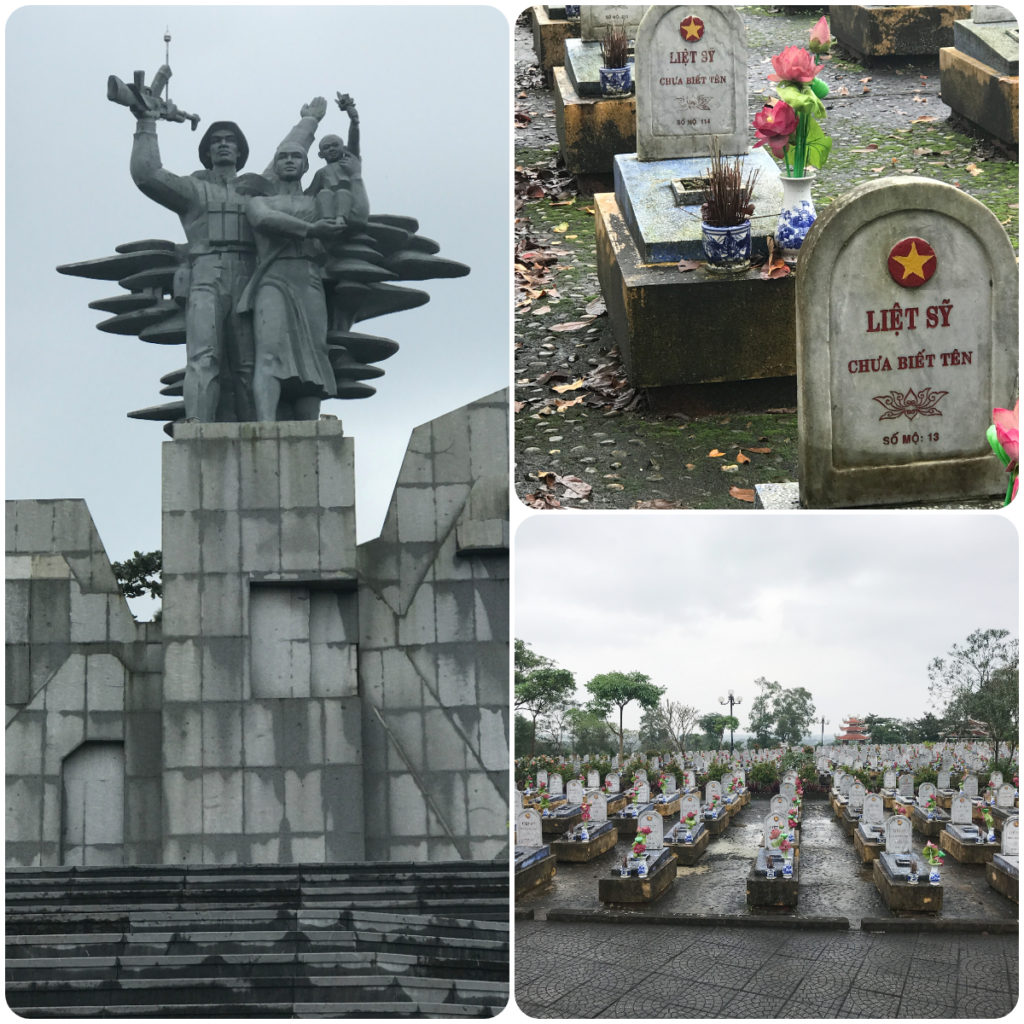
Massive monument at the entrance to the cemetery, graves of unknown soldiers and the thousands of tombstones of the fallen NVA
This is the largest memorial site which covers 40 hectares and is divided into 24 smaller sections according to localities. Many graves lie unnamed, simply representing a fraction of Vietnam’s 300,000 unknown soldiers missing in action. North Vietnamese Soldiers did not wear metal dog tags. The only way the fallen soldiers could be it identified was by a piece of paper wrapped in plastic which they carried. This of course was easily destroyed so there was no way of identifying many of the bodies.
It was a sobering sight looking across the hillside, dotted with simple white tombstones with the inscription of ‘martyr’ or ‘unknown soldier’.
The Rock Pile
The Rock Pile was a Marine outpost built on top of a huge outcropping. It is certainly a prominent sight from the highway and you would never know what went on there if you were driving along. The top can only be reached by helicopter which made it an important observation and artillery base from 1966 to 1969.
Dak Rong Bridge
This bridge is halfway along Highway 9 and is one of the main branches of the Ho Chi Minh Trail.
The Ho Chi Minh Trail was a vital north-south route for the North Vietnamese to move supplies, troops and weapons to their fighters in the south. It was never just one trail, but actually a shifting network of multiple trails over hundreds of kilometres, often weaving in and out of Laos.
This bridge was the main access point to the trails during the war and was bombed and rebuilt repeatedly. The current bridge was built in 1974 with the help of funding from Cuba.
Camp Carroll
This was the largest fire base of the US Marines. There were 24 big guns here to provide fire support for the Marines. Nothing much is left of this massive site. We were shown some concrete foundations which were the base of these massive guns which had a firing range of over 20 miles.
This entire base has given way to farmland and it was so hard to imagine what was here let along the scale of the structures situated along these hills.
Khe Sanh Combat Base
This is an area we were most interested in seeing.
We travelled just east of the Laos border. This was the site of a US base which fell under attack in early 1968. Over 10,000 North Vietnamese Army personnel, 500 Americans and countless numbers of civilians lost their lives during a bloody 77 day siege. It was one of the longest and bloodiest battles of the Vietnam War.
There was a small museum and remnants of the old runway and a few displays of helicopters, planes and tanks. They had built a replica of some of the trenches that would have dotted the area but had long since been destroyed.
Day Two
Mine Action Visitor Centre
This was a well set up and very informative museum highlighting the history of the Vietnam War and the aftermath. There was also information on the current efforts in the unexploded ordnance (UXO) clearance and victim assistance.
Vietnam is still heavily contaminated by unexploded ordnance. None more so than the Quang Tri province. This was the most heavily bombed part of Vietnam and it still remains the most contaminated.
There were photographs and displays of the 1972 destruction of the Quang Tri Citadel and also of villagers attempting to deactivate mines with bamboo sticks.
MAG (Mines Advisory Group) works in Quang Tri and Quang Binh in central Vietnam – two of the most contaminated provinces in the country. This is a joint venture funded by the US and Vietnam. We witnessed some mine sweeping in some of the back roads we travelled.
In these areas, where poverty rates are well above the national average and more than 80 per cent of the population rely on the land for agricultural activities to make a living, several hundred thousand UXO items remain.
Landmines and unexploded ordnance (UXO) kill and injure thousands of men, women and children every year. They can lie in the ground for decades after a conflict is over, killing or maiming those trying to farm their land or build new structures. This is the most dangerous time as new munitions are unearthed during the processes. Usually the land owners call in MAG to check the areas before earthwork begins. This is only achievable if the local farmers are educated in the dangers.
Information panels detail the grim reality for locals: cluster bombs cause 46% of incidents, of which 80% are fatal. Over 8500 people have died in the province since the war ended. Minority people are particularly vulnerable as they seek scrap metal to sell.
Hien Luong Bridge
This pedestrian bridge crosses the Ben Hai River in the middle of the DMZ and marks the former boarder between North and South Vietnam from 1954 to 1972. During the separation of Vietnam, the bridge was painted with the two different colours, yellow and blue. We were able to ‘cross the line’ and have one foot in the South and one foot in the North.
In 1967 the bridge was badly damaged by bombing so this replica bridge was constructed in 1972.
Today it is maintained as a major national monument for the reunification of Vietnam at the end of the war. There is also a museum, propaganda war remnants and two memorials.
Beside the bridge there are tall stacks of loudspeakers on steel racks. These were used during the separation of North and South to blast propaganda messages across the river to the other side. Some still showing the signs of many bullet holes as the opposing sides took offence so some of the messages being blasted out across the water.
Vinh Moc Tunnels
I hadn’t really heard of the Vinh Moc Tunnels. The Cu Chi Tunnels in the south steals most of the tourist limelight.
Unlike the Cu Chi tunnels, which was used mainly for fighting purposes, the Vinh Moc Tunnels were bomb shelters for civilians and a storage facility for ammunition and weapons.
When the alarm sounded of incoming bombing, the villagers moved underground and remained there for as long as the bombing continued. This could be for one hour or a few days. History shows that the longest stint was for five days and nights.
There were 300 people sheltering here over a period of 6 years.
Wearing gumboots supplied to us by our guide (thank goodness), we descended down into a labyrinth of darkness as the ceiling and walls seem to close in on us. We saw areas dug into the walls used for sleeping quarters, a meeting room and kitchen. For entertainment, they watched movies with a projector and generator. There was an operating room, hospital, a nursery and even a maternity ward. There was a total of 17 babies born in the darkness and dampness of the tunnels. Six of those babies born, still live in the village today.
The tunnels were dug in secret between 1966 and 1967, dispersing the soil at night to avoid detection. The tunnels are on three different levels with 13 entrances/exits including 7 that face the coast. This was good for ventilation but also imperative for the supply lines to the sea.
As we descended further into the lowest level, we were walking through torrents of water. This would have been something that the occupants would have to contend with whilst living under ground.
Although the Vinh Moc tunnel is the longest and largest tunnel, it isn’t the only one in the district. There were 114 in the Vinh Linh district with miles of trenches connecting the villages.
The Americans did not know the exact location of the tunnels so they heavily bombed the area in the hope of flushing the locals out. In 3 years, 7 tons of bombs were dropped per person living in the tunnels.
Summary
Regardless if you are a serious war history buff or just interested in general history, the DMZ tour is worth doing. I would recommend you stay one night in Dong Ha rather than the return commute from Hue.
It is essential to get a good guide, not just a driver. Because most of remains are non-existent, you really need to hear the stories surrounding each site. Only then can you fully appreciate what went on during the turbulent times of the Vietnam/American War.
Click on the link below to see a video of some of the highlights of our tour.
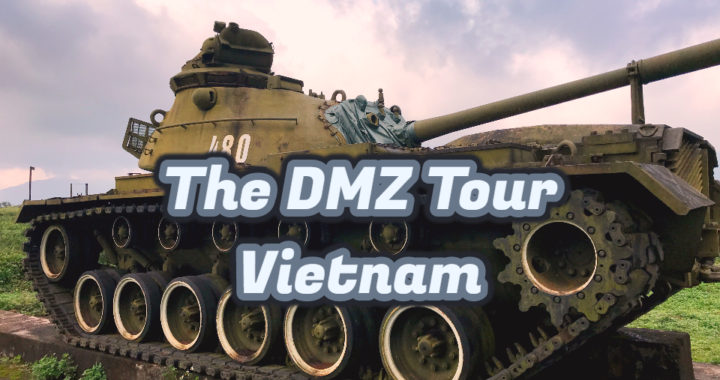
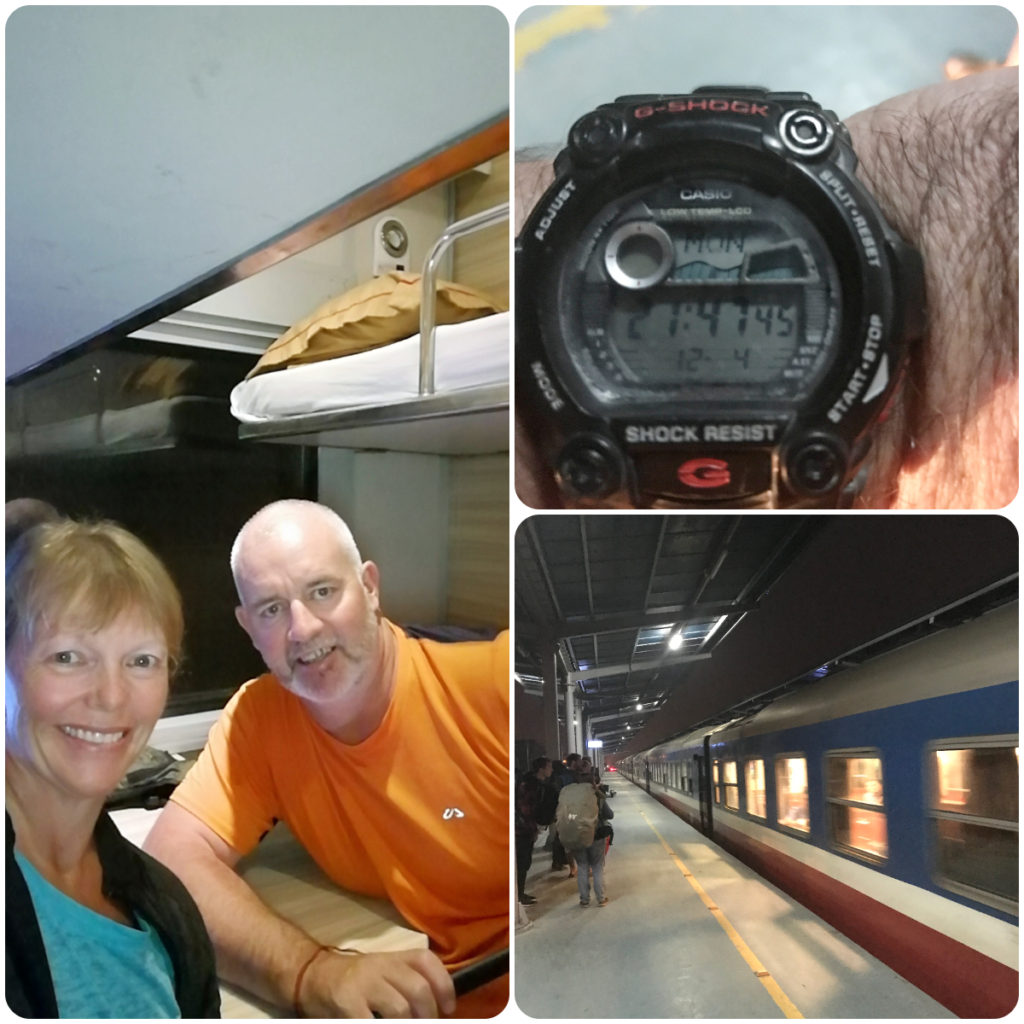
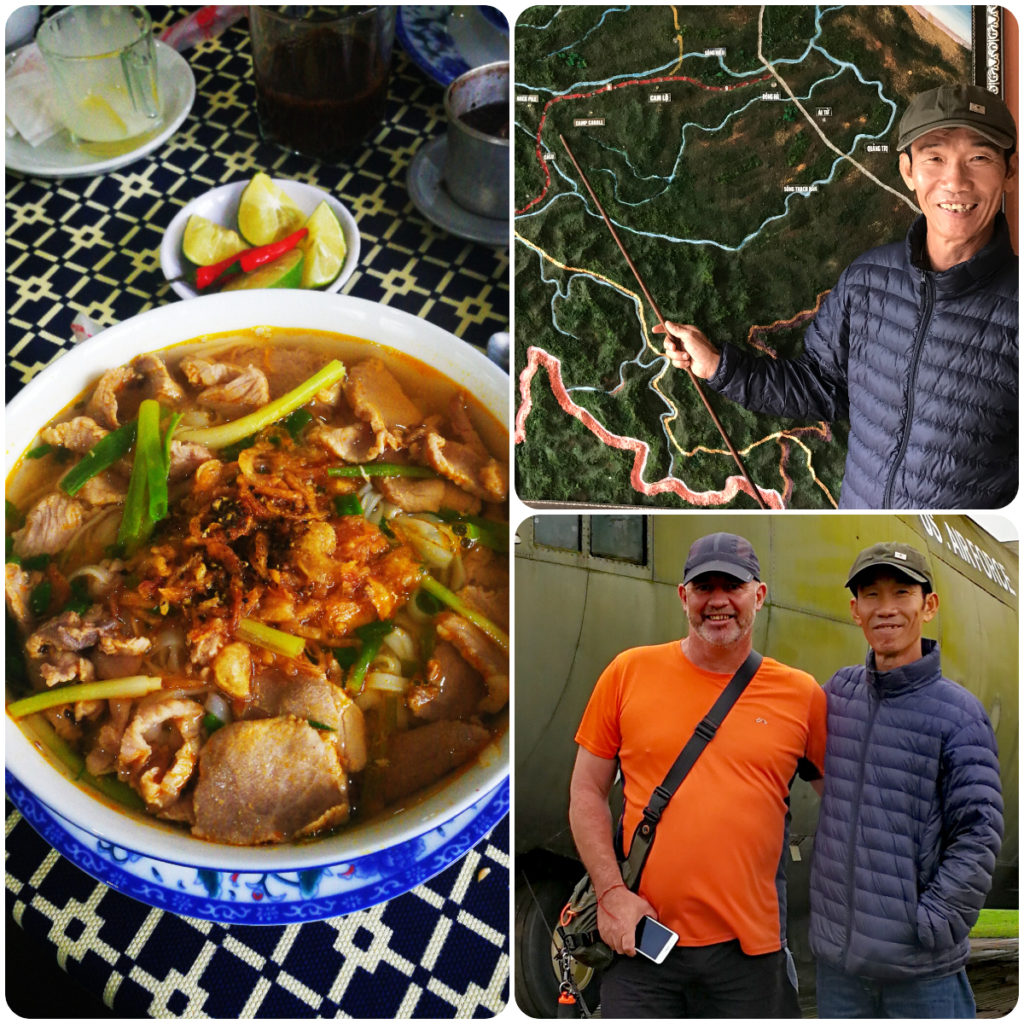
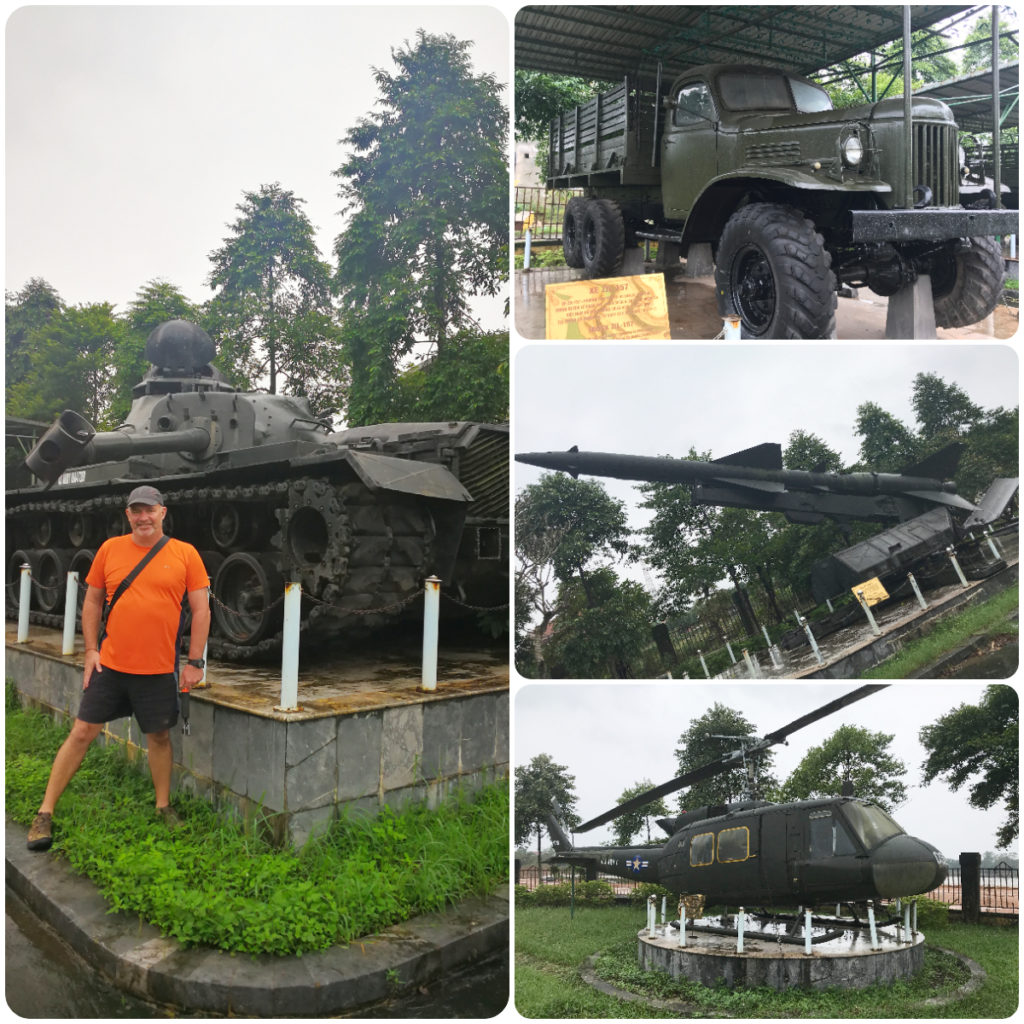
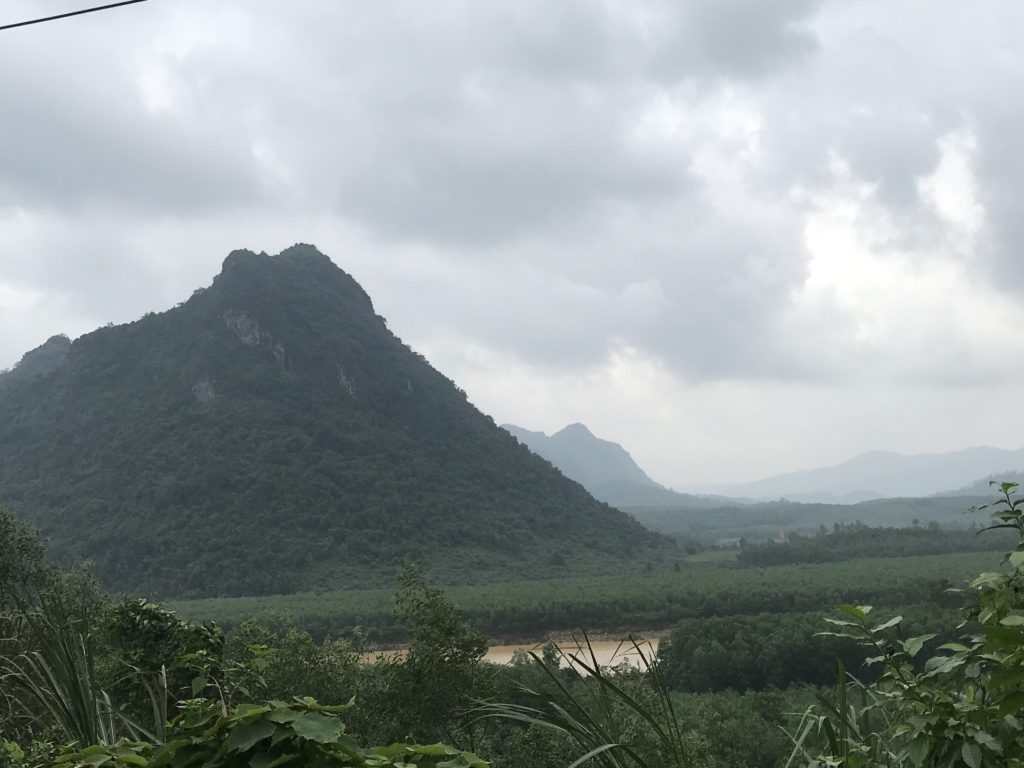
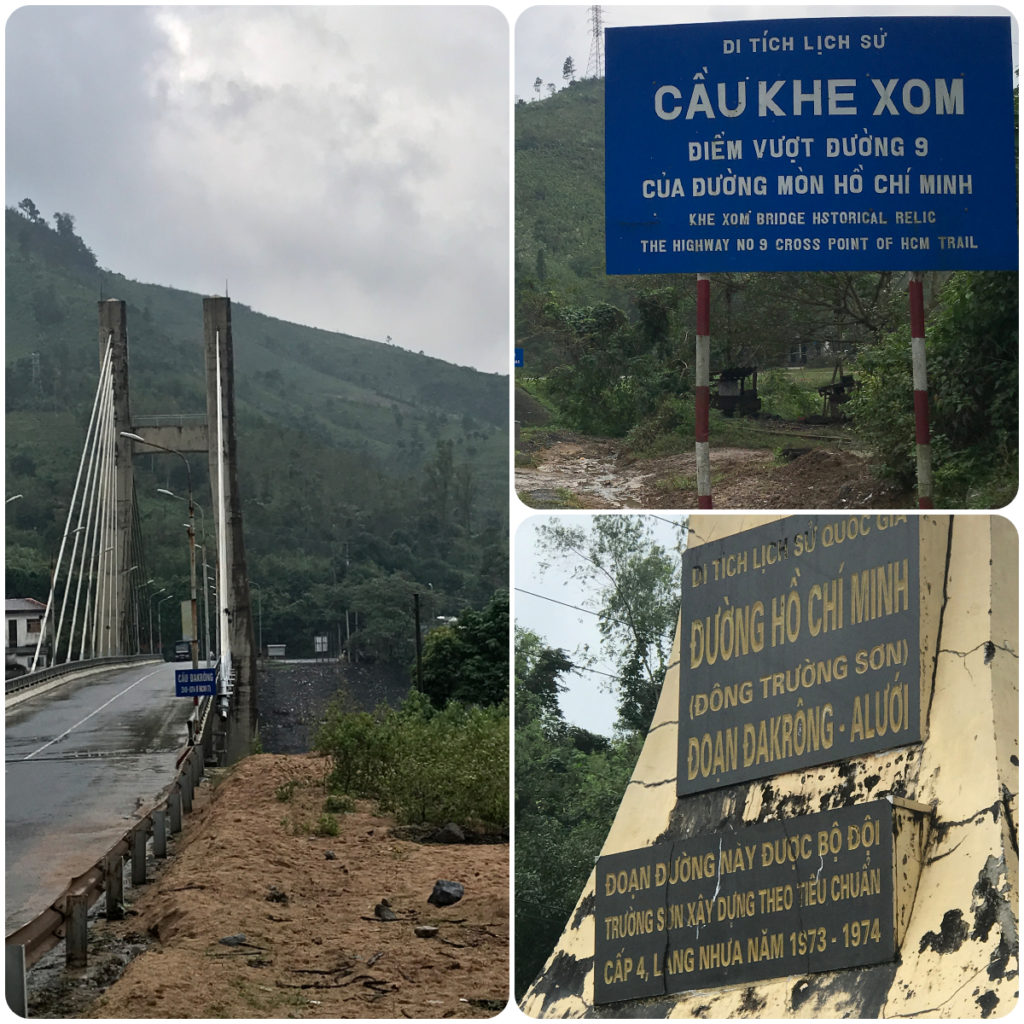
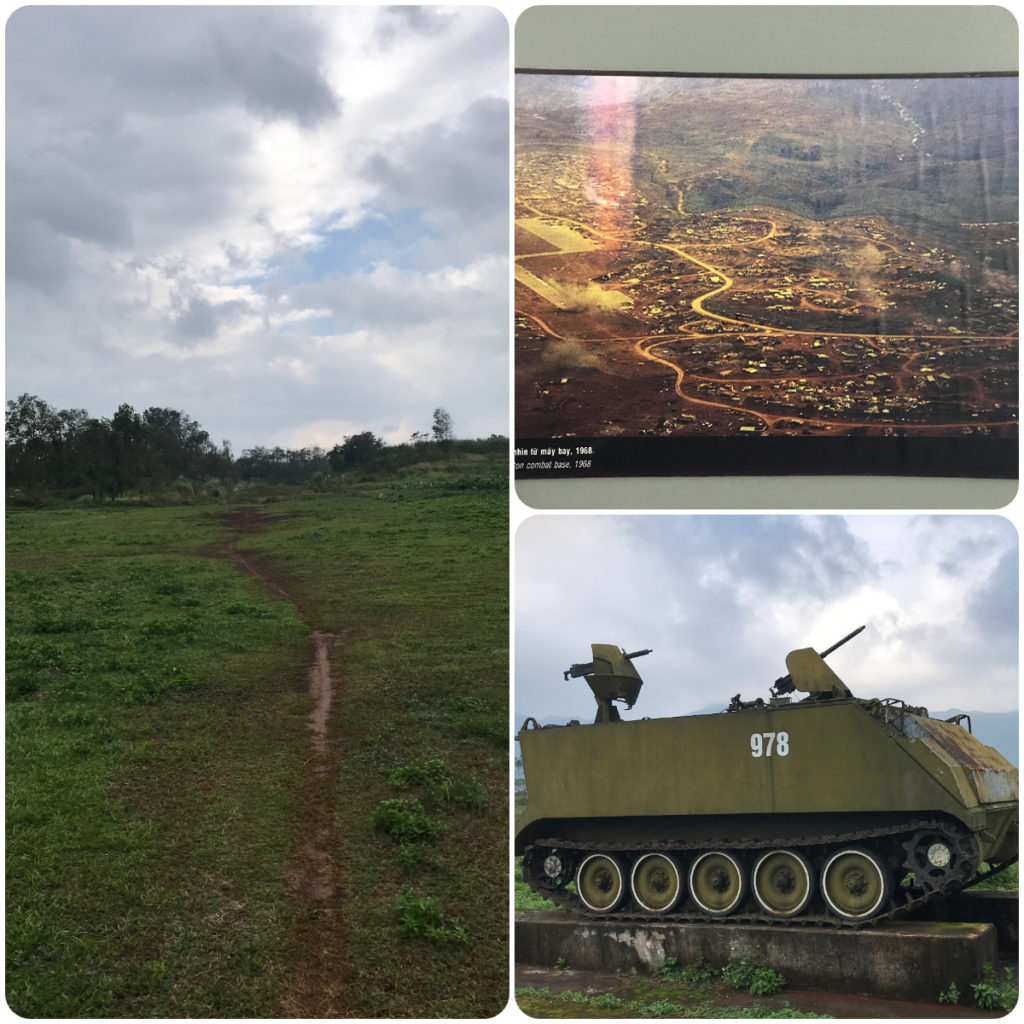
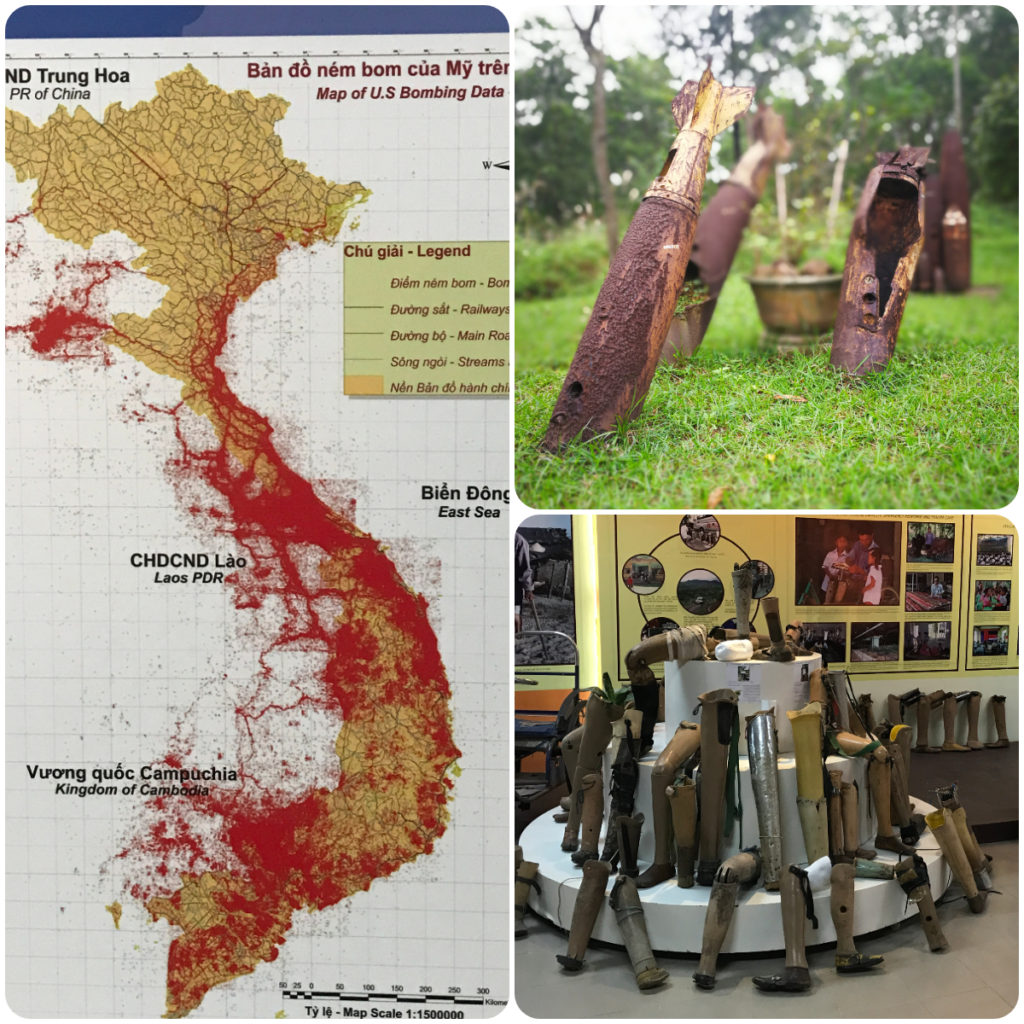
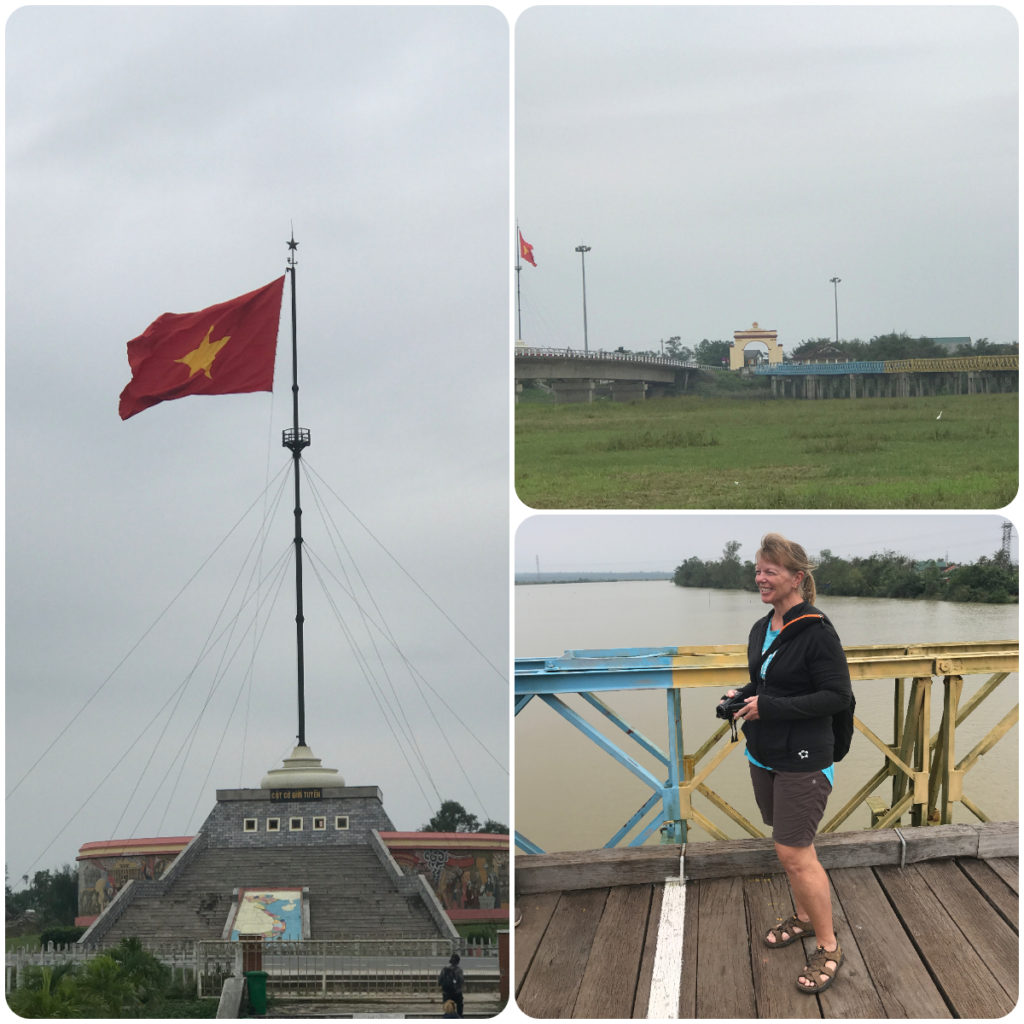
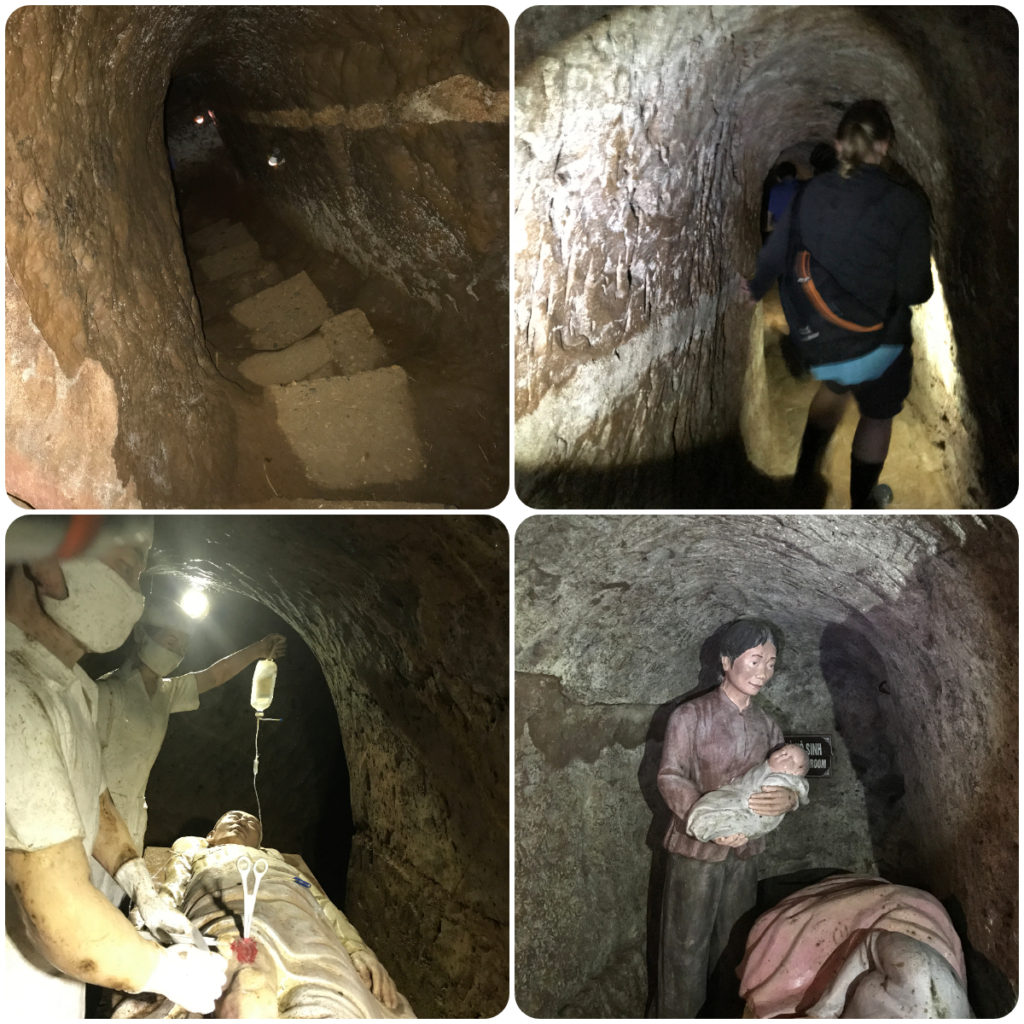
Great article Linda. Thanks for the tip about spending the night instead of spending too much time traveling back and forth. Train ride sounds like an adventure! Very interesting place – those tunnels! Yikes, I didn’t know about that. I grew up with so many “Nam Vets” here in the USA. Most of them are still alive but not as much focus on them since the younger vets from the Middle East continue to come home and deal with civilian life. Not many vets here seem to be interested in going back to visit, hard memories. Anyway, thanks again for a great inside look, first hand blog article about the DMZ.
Thanks for your feedback Cindy. It makes war so much more real when it actually happens in our lifetime, not a generation ago.